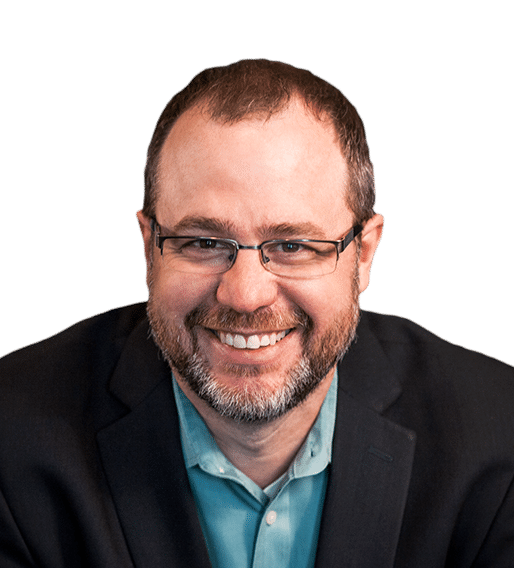
Organizations can struggle to fully embrace and drive digital transformation initiatives. Leaders hire the right talent for the job to be done at the time, but as technological advancements continue to evolve rapidly, the teams doing the work are expected to evolve just as quickly. Is your team prepared?
How can you tell if your team is ready? The following key indicators can help ground you in their readiness. If your team exhibits any of the following challenges, this guide provides suggestions for how to move them forward to help you achieve your digital transformation goals.
Evaluating your team’s digital transformation readiness
You ask your team what digital transformation means and get different answers
Varying responses could indicate that your team is working from different perspectives. Team members might communicate what they know but not the full breadth of what digital transformation encompasses.
Solution: Create a shared understanding of digital transformation so that every team member operates from the same baseline as they look for opportunities.
Team members do not refer to your vision when making decisions
This can happen when leaders don’t take the broad, often lofty goals that an organization establishes and effectively reframe them into a narrowed focus relevant to their team. If team members don’t understand or see the connection to the organization’s vision, they may not be motivated to embrace it fully.
Solution: Before sharing broadly, socialize your vision with a co-creation mindset, starting with direct reports and expanding. With every discussion, seek feedback and adjust in real-time so that when it is reviewed as a team, they will all have a hand in helping craft the vision.
New ideas are brought up sparingly
Does it feel like your team isn’t openly sharing ideas unless specifically asked? Or maybe they are, but it’s typically the same few people sharing those ideas. Is your team overworked and doesn’t have space and time to think about new ideas?
Solution: This could be due to various reasons: individual-based, team-based, or both. Conducting a team agreement workshop provides structure to create new expectations while uncovering the existing barriers and unlocking untapped potential in the team.
Teams are not breaking down silos
Organizational design has been studied for years, resulting in various strategies that drive effectiveness. Yet, as Peter Drucker so eloquently stated years ago, “Culture eats strategy for breakfast.”
Solution: Change this narrative by demonstrating behaviors you expect from your team by forging partnerships with other teams and departments needed to accomplish your vision. Conducting a workshop on behavioral expectations is a powerful approach to unlocking what is holding them back.
You’ve moved so fast that you’ve become inefficient
How often are you inspecting the efficiency of your team and the processes they need to operate within? Small changes over time can slow down the team’s pace incrementally.
Solution: Empower your team to stop and fix an inefficiency instead of working around it. The delay this might cause can have an exponential impact beyond the current workaround.
Lack of discussion around technology trends
You hired your team with a particular set of skills for the job at that time, but those skills must continue evolving. Leveraging technological advancements in new and exciting ways requires teams to broaden their understanding of them, widening their aperture as they look for those opportunities.
Solution: Create (and protect!) routines for the team to dedicate time to learning and discussing what they learned regularly. Challenge them in 1:1s to explore what they learned and how that might apply to their job function, sharing your ideas as needed to help connect the dots.
Your team doesn’t have the tools needed
Your team is using non-standard tools or leveraging a tool that is not best for the job. Organizations need to get scrappy in lean times, but it may come with an unknown future cost in both dollars and effort.
Solution: Include tool discussions in 1:1s and team meetings as a sensor for knowing when to dig deeper. When the need arises, conduct a tools audit to understand the gaps and devise a plan to address them. Since products often expand their capabilities, periodic audits may help optimize the annual spend.
Next steps to achieve team alignment
If these challenges exist for you and your team, consider the following steps:
Recognize and celebrate the past
It can be exciting and distressing for teams embarking on a digital transformation journey. This is a big change for many organizations, so it is important to recognize and celebrate the past and the accomplishments the team has achieved while preparing them for the journey ahead.
Create a safe environment
Asking your team to operate in a new way or to learn new skills can create anxiety for some. To achieve self-actualization – that is, the realization or fulfillment of one’s talents and potential – Maslow’s Hierarchy of Needs tells us that safety is a base need. If you have not created an environment for your team members to openly share and feel safe, you may never get the most out of your team.
Surface the obstacles
There are hidden obstacles for the team that you may not be aware of. Gather insights from every team member regarding the obstacles they currently or expect to face. Then, work relentlessly to remove those obstacles and/or empower others to do so.
Create a safe environment
If you can’t do this alone, do your homework and find the right partner to help you where needed. When evaluating potential partners, consider the following:
- Do they exhibit the same culture as your organization/team?
- Do they challenge your thinking to make you aware of your blind spots?
- Does their approach remove any biases that may creep in from your influence on the team?

Developing a baseline understanding of your team’s readiness to embrace digital transformation – including potential misalignment and obstacles – can unlock valuable insights to act upon, improving the success of achieving your goals.
Wouldn’t the effort of knowing that ahead of time be worth the benefit in the end?




















